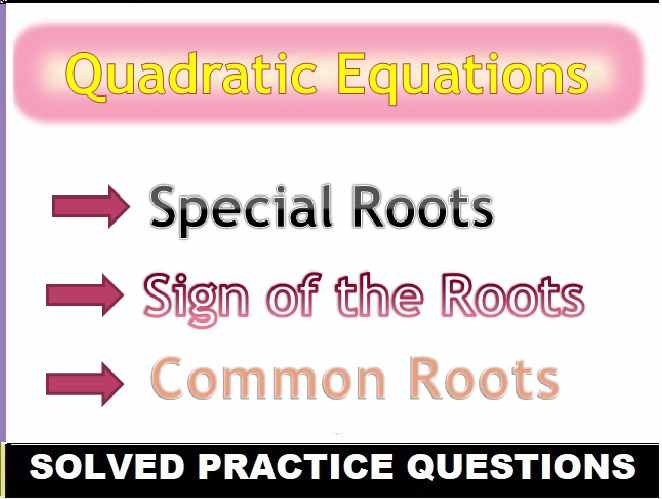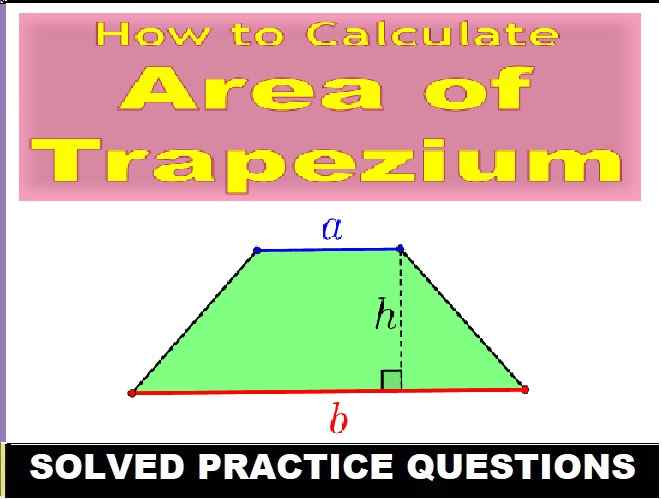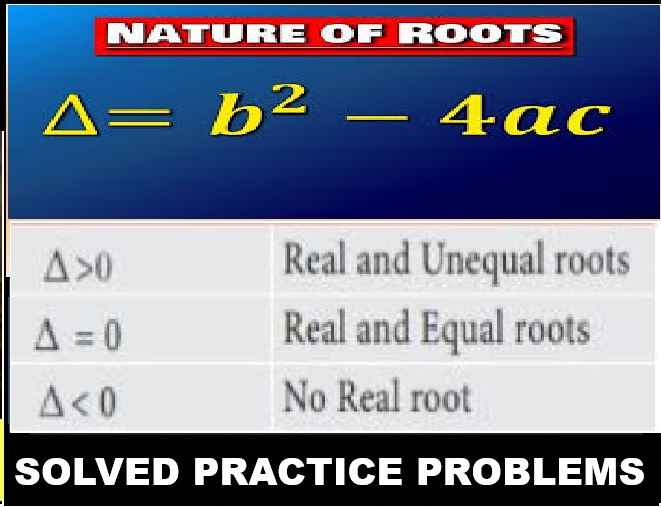Model Questions Paper-6 Class-8 ML Aggarwal ICSE Mathematics Solutions. APC Understanding Mathematics for ICSE Class-8 Model Question Paper-6 Solutions of Section-A , B, C and D based on Chapter-10 to 19. Visit official Website CISCE for detail information about ICSE Board Class-8 Mathematics.
Model Questions Paper-6 Class-8 ML Aggarwal ICSE Mathematics Solutions.
( based on chapter-10 to 19)
Time Allowed-2 and 1/2 hour
max mark-90
-: Select Topics :-
Section-A, Paper-6 Class-8 ML Aggarwal
Questions 1 to 8 are of 1 mark each.
Question 1.
If x + y = 11 and xy = 24, then x2 + y2 =
(a) 121
(b) 73
(c) 48
(d) none of these
Answer
x + y = 11, xy = 24,
We’know that, (x + y)2 = x2 + y2 + 2xy
x2 + y2 = (x + y)2 – 2xy
= (11)2 – 2 × 24 = 121 – 48 = 73 (b)
Question 2.
Factors of a3 – 64a are
(a) a(a – 8)2
(b) (a + 8) (a – 8)
(c) a(a + 8) (a – 8)
(d) a(a + 8)2
Answer
a3 – 64a = a[a2 – (8)2]
= a(a + 8)(a – 8) (c)
Question 3.
If 3(y – 3) = 5(2y + 1) then y is equal to
(a) 3
(b) -3
(c) 2
(d) -2
Answer
3(y – 3) = 5(2y + 1)
⇒ 3y – 9 = 10y + 5
⇒ 3y – 10y = 5 + 9
⇒ -7y = 14
⇒ y = = -2 (d)
Question 4.
If one angle of a parallelogram is 30° less than other angle, then the larger angle is
(a) 150°
(b) 75°
(c) 105°
(d) 210°
Answer
One angle of a parallelogram = 30 less then the other
n – y = 30°
But x + y= 180°
∴ Adding, 2x = 210° ⇒ x = = 105°
∴ One angle = 105°
and other angle = 180° – 105° = 75°
Larger angle = 105° (c)
Question 5.
A polyhedron has 7 faces, 10 vertices and 15 edges. Name of the polyhedron is
(a) hexagonal prism
(b) pentagonal prism
(c) hexagonal pyramid
(d) none of these
Answer
A polyhedron has 7 faces, 10 vertices and 15 edges,
It is a pentagonal prism. (b)
Question 6.
The base of a triangle is twice its height. If the area of the triangle is 25 cm2, then the base is
(a) 10 cm
(b) 20 cm
(c) 5 cm
(d) 25 cm
Answer
Base of the triangle is twice its height.
Let height = x cm
Then base = 2x cm
∴ Area = × base × height
⇒ × 2x × x = x2
⇒ x2 = 25 = (25)2
⇒ x = 5
∴ Base = 2x = 2 × 5 = 10 cm (a)
Question 7.
From a well-shuffled deck of 52 playing cards, one card is drawn at random then the probability that card drawn is a blackjack

Answer
Number of possible outcomes = 52
One card is drawn, then
Probability of the card is a blackjack = (b)
Question 8.
Amongst the following digits, the one having exactly one line of symmetry is
(a) 0
(b) 3
(c) 6
(d) 8
Answer
One line of symmetry can be drawn of the digit 3. (b)
Model Questions Paper-6 Class-8 ML Aggarwal Section-B
Questions 9 to 14 are of 2 marks each.
Question 9.
Using suitable identity, evaluate (9.7)2.
Answer
(9.7)2 = (10 – 0.3)2
= (10)2 – 2 × 10 × 0.3 + (0.3)2
= 100 – 6 + 0.09
= 94.09
Question 10.
Factorize x2y2(a4 + b4) + a2b2(x4 + y4).
Answer
x2y2(a4 + b4) + a2b2(x4 + y4)
= x2y2a4 + x2y2b4 + a2b2x4 + a2b2y4
= x2y2a4 + a2b2x4 + x2y2b4 + a2b2y4
= x2a2(y2a2 + b2x2) + y2b2(x2b2 + a2y2)
= x2a2(b2x2 + a2y2) + y2b2(b2x2 + a22y2)
= (b2x2 + a2y2) (a2x2 + b2y2)
Question 11.
Sum of three consecutive odd numbers is 153. Find the numbers.
Answer
Let first odd number = 2x + 1
Second odd number = 2x + 3
and third odd number = 2x + 5
According to the condition,
2x + 1 + 2x + 3 + 2x + 5 = 153
⇒ 6x + 9 = 153
⇒ 6x = 153 – 9 = 144
⇒ x = = 24
∴ First odd number = 2 × 24 + 1 = 49
Second number = 49 + 2 = 51
and third number = 51 + 2 = 53
Hence numbers are 49, 51, 53
Question 12.
If each interior angle of a regular polygon is 108°, then find the number of sides of the polygon.
Answer
Each interior angle of a regular polygon = 108°
Let n be the number of sides, then
× 90° = 108°
⇒
⇒ 20n – 40 = 12n
⇒ 20n – 12n = 40
8n = 40
⇒ n= = 5
∴ Number of sides = 5
Question 13.
Verify Euler’s formula for decagonal pyramid.
Answer
In a decagonal pyramid.
Number of faces = 11
Number of vertices = 11
Number of edges = 20
Using Euler’s formula
F + V = E + 2
⇒ 11 + 11 = 20 + 2
⇒ 22 = 22
Hence proved.
Question 14.
A cuboid is of dimensions 24 cm × 30 cm × 36 cm. How many small cubes with side 6 cm can be placed in the cuboid?
Answer
Dimensions of a cuboid = 24 cm × 30 cm × 36 cm
Edge (side) of a small cube = 6 cm
∴ Number of small cubes which will be kept in the cuboid = (∵
)
= 4 × 5 × 6 = 120
Section-C Model Questions Paper-6 Class-8 ML Aggarwal
Questions 15 to 24 are of 4 marks each.
Question 15.
Simplify the following expressions and evaluate it when x = 1, y = -1
(5xy – 3x2 + 2y2) × (5y2 – 8xy + 3x2) + 9x3y – 8y4 + 12x4
Answer
(5xy – 3x2 + 2y2) × (5y2 – 8xy + 3x2) + 9x3y – 8y4 + 12x4
= 5xy(5y2 – 8xy + 3x2) – 3x2(5y2 – 8xy + 3x2) + 2y2(5y2 – 8xy + 3x2)
+ 9x3y – 8y4 + 12x4
= 25xy3 – 40x2y2 + 15x3y – 15x2y2 + 24x3y – 9x4 + 10y4 – 16xy3
+ 6x2y2 + 9x3y – 8y4 + 12x4
= 3x4 + 48x3y – 49x2y2 + 9xy3 + 2y4
When x = 1, y = -1, then
= 3(1)4 + 48(1)3(-1) – 49(1)2(-1 )2 + 9(1)(-1)3 + 2(-1)4
= 3 – 48 – 49 – 9 + 2
= -106 + 5 = -101
Question 16.
Factorize: 15(2x – 3y)2 – 4(4x – 6y) – 16
Answer
15(2x – 3y)2 – 4(4x – 6y) – 16
15(2x – 3y)2 – 4 × 2(2x – 3y) – 16
Let 2x – 3y = p, then
15p2 – 8p – 16
15p2 – 20p + 12p – 16
{∵15 × (-16) = -240
-240}
= 5p(3p – 4) + 4(3p – 4)
= (3p – 4) (5p + 4)
= [3(2x – 3y) – 4] [5(2x – 3y) + 4]
= (6x – 9y – 4) (10x – 15y + 4)
Question 17.
Two years ago Ramesh was three times as old as his son. Two years later, twice of his age will be equal to the five times that of his son’s age. Find their present ages.
Answer
Two years ago,
Let the age of son = x years
Then age of Ramesh, the father = 3x years
∴ Present age of Ramesh = 3x + 2 years
and age of his son = x + 2 years
2 years later,
Age of Ramesh will be = 3x + 2 + 2 = 3x + 4
years and age of his son = x + 4 years
According to the condition,
2(3x + 4) = 5(x + 4)
⇒ 6x + 8 = 5x + 20
⇒ 6x – 5x = 20 – 8
⇒ x = 12
∴ Present age of Ramesh = 3x + 2
= 3 × 12 + 2 = 36 + 2 = 38 years
and age of his son = x + 2 = 12 + 2 = 14 years
Question 18.
In the given figure ABCD is a parallelogram in which ∠DAP = 40°, ∠BAP = 25° and ∠CPD = 105°, find
(i) ∠ABP
(ii) ∠PDC
(iii) ∠ACB
(iv) ∠CBD
Answer

In parallelogram ABCD diagonals AC and BD intersect each other at P.
∠DAP = 40°, ∠BAP = 25° and ∠CPD = 105°
To find :
(i) ∠ABP
(ii) ∠PDC
(iii) ∠ACB
(iv) ∠CBD
∴ ∠APB = ∠CPD (Vertically opposite angles) = 105°
In ∆APB,
(i) ∠PAB + ∠PBA + ∠APB = 180° (Angles of a triangle)
⇒ 25° + ∠PBA + 105° = 180°
⇒ ∠PBA + 130°= 180°
∠PBA = 180° – 130° = 50°
or ∠ABP = 50°
(ii) ∠PDC = ∠PBA (Alternate angles)
∴ ∠PDC = 50°
(iii) ∠ACB = ∠CAB (Alternate angles) = 25°
(iv) In ∆PDC (Sum of its opposite interior angles)
Ext. ∠CPD = ∠PCD + ∠PDC
⇒ 105° = 40° + ∠PDC
∴ ∠PDC = 105° – 40° = 65°
Question 19.
Construct a rhombus TRUE whose one side TR = 4 cm and diagonal TU = 6.5 cm.
Answer
Steps of construction :
(i) Draw a line segment TU = 6.5 cm.
(ii) With centre T and U and radius 4 cm,
draw arcs which intersect each other at E and R,
both sides to TU.
(iii) Join TR, TE, UR and UE.
TRUE is the required rhombus

Question 20.
Construct a parallelogram GOLD in which diagonal GL = 3.8 cm, diagonal OD = 4.6 cm and angle between diagonals is 60°.
Answer
Steps of construction :
(i) Draw a line segment OD = 4.6 cm.
(ii) Bisect OD at C.
(iii) At C draw a ray CX making an angle of 60° and produce XC to Y.
(iv) Cut off CG = CL = = 1.9 cm.
Join GO, OL, LD and GD.
GOLD is the required parallelogram.

Question 21.
In the given figure, O is the centre of the circle. If PT is tangent to the circle at point T, find the size of each lettered angle.

Answer
A circle with centre O.
PT is a tangent and POQ is a tangent ∠OPT = 32°
∵ PT is tangent and OT is the radius
∴ OT ⊥ PT
∠OTP = 90°
∴ In ∆OPT
x + ∠OTP + ∠OPT = 180° (∠s of triangle)
⇒ x + 32° + 90° = 180°
⇒ x + 122° = 180°
⇒ x = 180°- 122° = 58°
In ∆OTQ, ∠OTQ = ∠OQT = y (∵ OT and OQ are radii of the circle)
But, x = ∠OQP + ∠OTQ
58°= y + y = 2y
∴ y = = 29°
Hence, x = 58°, y = 29°
Question 22.
A rectangular sheet of tin foil of size 30 cm × 18 cm can be rolled to form a cylinder two ways along length and breadth. Find the ratio of volumes of the two cylinders thus formed.
Answer
Length of rectangular sheet = 30 cm
and breadth = 18 cm

(i) By rolling length wise,
circumference = 30 cm
∴ Radius (r1) =
=
and height (h1) = 18 cm
∴ Volume = πr2h = π × 18 cm3
and by rolling breadth wise,
circumference = 18 cm.

Question 23.
Construct a histogram for the following data:

Answer

Histogram regarding the above-given data is given here:

Question 24.
Height of a room is half of its length and its breadth is of the height. If the cost of painting its four walls at the rate of ₹1.75 per m2 is ₹ 196, then find the cost of tiling the floor of the room at the rate of ₹8.50 per m2.
Answer
Let length of a room (l) = x m
∴ Height (h) = m
and breadth (b) = x m
Cost of painting the walls at the rate of 1.75 per m2 = ₹196


Now, area of floor = l × b = 8 × 6 = 48m2
Rate of tiling = ₹8.50 per m2
Total cost = ₹48 × 8.50 = ₹48 × = ₹ 204
Section-D, Model Questions Paper-6 Class-8 ML Aggarwal
Questions 25 to 29 are of 6 marks each.
Question 25.
If , them find

Answer

Question 26.
In the given figure, ABCD is a rhombus and DCFE is a square, If ∠ABC = 56°, find
(i) ∠DAG
(ii) ∠FEG
(iii) ∠AGC

Answer
(i) As, ABCD is a rhombus,
∴ AB = BC = CD = DA …(i)
Also, DCFE is a square
∴ DC = CF = FE = ED …(ii)
From (i) and (ii), we get
ED = AD
∴ ∠DAE = ∠DEA
Also, ∠ABC = ∠ADC and ∠EDC = 90°
∴ ∠EDA = 90° + 56°
In ∆EDA,
∠EDA + ∠DAE + ∠DEA = 180°
(90° + 56°) + 2∠DAE = 180° (∵ ∠DAE = ∠DEA as ED = AD)
2∠DAE = 180°- 146 = 34°
∠DAE = = 17°
∴ ∠DAE = ∠DAG = 17°
(ii) ∠FEG = ∠FED – ∠DEG
= 90° – 17° = 73° (v DCFE is a square)
(iii) In ∆ DEG,
∠D + ∠DEG + ∠DGE = 180°
90° + 17° + ∠DGE = 180°
⇒ ∠DGE = 180- 107° = 73°
∴ ∠AGC = 73° (Vertically opposite angle to ∠DGE)
Question 27.
The figure given below shows a field with the measurement given in metres. Find the area of the field.

Answer
AD = 12 + 15 + 10 = 37 m
AH = 12 + 15 = 27 m
AF = 12 m, FB = 30 m, HC = 25 m, GE = 20 m,
FH = 15 m, HD = 10 m
In the figure, there are 3 triangles and one trapezium.

Total area = 370 + 180 + 125 + 412.5 m2 = 1087.5 m2
Question 28.
A bag contains 5 red, 6 black and 4 white balls. A ball is drawn at random from the bag. Find the probability that the ball drawn is
(i) white
(ii) not black
(iii) red or black
Answer
In a bag, there are 5 red, 6 black and 4 white balls.
∴ Total number of balls (outcomes) = 5 + 6 + 4 = 15
One ball is drawn at random.
(i) ∴ Probability of a ball being white P(E) =
(ii) Probability of a ball being not a black
[(5 + 4) = 9] = P(E) =
(iii) Probability of a ball being red or black
[(5 + 6) = 11] P(E) =
Question 29.
A school decided to award prizes to their students for three values, honesty, punctuality and obedience. The value of prize for punctuality is of the value of prize for honesty and value of prize for obedience is
of the value of prize for punctuality. If the total value of the three prizes is ₹1500, find the value of each prize. Which quality you prefer to be rewarded most and why? What values are being promoted?
Answer
Total amount of the three prizes = ₹ 1500
Let value of prize for honesty = x
Then value of prize for punctuality = x
and value of price for obedience

I prefer honesty most and it is the root cause of types of corruption. When a man is honest he will never take any kind of bribe. An honest man is always honest and punctual and he is hard worker and obedient also.
— End of Model Questions Paper-6 Class-8 ML Aggarwal Solutions :–
Return to – ML Aggarwal Maths Solutions for ICSE Class -8
Thanks


